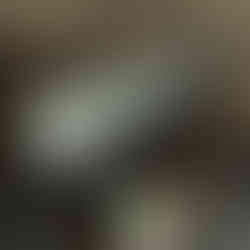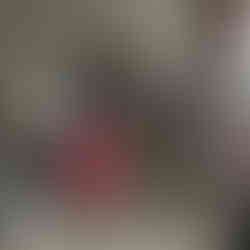How many sieves do you have in your kitchen?
- rosemary
- Jul 28, 2024
- 6 min read
"To sift: (a) to put (a fine or loose substance) through a sieve so as to remove lumps or large particles.
(b) an act of sifting something, especially so as to isolate that which is most important." Oxford Languages

I have no idea where this thought came from but anyway today I'm looking at sieves. Things with holes used to separate stuff out, make them smaller or add air. And let me tell you, when you start to think about it, you probably have dozens - literally. Well I'm pretty sure I do.
I confess I had not even thought of the hand - the most basic of sieves, until I started looking for paintings of sieves, but certainly the hand can be used as a sieve. I have seen lots of chefs - Jamie and Nigella for a start - separating egg yolks ad whites, simply by breaking the egg into a hand - which is actually quite tricky to do, but if you do manage to get the egg in there, it is indeed, then pretty easy to separate out the white from the yolk which stays in your hand.

I confess I haven't looked into the history of sieves and shall not be doing so in this particular post - suffice to say that the Egyptians were using sieves to separate out different grades of grain, so if they were doing it then probably the Mesopotamians were, and maybe even prehistoric tribes used them too. Another time.

I'm also not going to trace their history through the ages, but I will bring your attention to this painting - also found when looking for a suitable painting. Sieves apparently also had symbolic meaning. Queen Elizabeth I - the Virgin Queen - set great store by that particular mark of her dedication to England - married to England rather than a man and all that. But why a sieve - which she holds in her hand? Well it comes from a poem by Petrarch, in which he recounts the legend of Tuccia an Ancient Greek vestal virgin who was accused of being unchaste. To prove her virtue she took a sieve and carried water from the river below the temple to the temple. Well it is a legend. Anyway that's why Elizabeth is holding a sieve - to prove her chastity. There's another painting with a sieve too.
Back to my kitchen and its sieves. I pondered briefly whether graters, and egg slices counted, and decided against it in the end, but there are definitely holes involved. I also ignored my wicker bread baskets with holes for air, and the wicker baskets in which I keep my onions and potatoes - also for the air. Plus the sort of baskets on the wall of the pantry in which I keep plastic bags for reuse - there are gaps from which they are pulled. And finally I ignored my drawer of tea towels which are sometimes used to squeeze the juice from zucchini and cucumbers. Oh and the bamboo steamer - didn't count that either although maybe I should have. Paper towels? No they absorb although they do separate.
So what am I left with? Heaps.
First of all the pretty straightforward sieves, which hang on my wall.
There's a conical pasta sieve given to me by my son, who felt that one should have a genuine conical pasta sieve, rather than a colander or ordinary sieve which I had previously used. There are two 'ordinary' sieves, one larger than the other used for straining things and sifting flour. Sifting flour is not just to make it finer - it's also to allow air to mix with the flour - the higher you hold it as you sieve the better I believe. And a small conical sieve used for things like olives in a jar. I don't have one of those flour sieves wher you move something backwards and forwards across a mesh.

Next door to the sieves are a couple of fish slices - well flat holey implements which allow you to let the sauce or the fat separate from the fish or the piece of meat you are lifting from the pan. I forgot to photograph the slotted spoon sitting next to it which is used to lift solid things out of a sauce or a stew, but in my wooden spoon holder are these two - kind of slotted spoons plus a potato masher, which is not strictly speaking a sieve I suppose. It's really a crusher.
As is my garlic crusher, and my mouli, shown here with two very small sieves for separating tea leaves from a teapot and also in which you can place tea leaves or herbs to infuse in some kind of liquid.

In the same drawer as the mouli - a genuine French one - are my cake racks - are they sieves? I think they are because they let heat out and air in to your cooling cake.
And those cake racks could also be used like my grill in the grill pan - to let the juices from the cooking meat, fish or vegetables placed on it, to drip into the tray below. Which enables you to have a tasty sauce and also allows the meat, fish or vegetable to char and develop crunch. And the same priniciple applies to placing a roast, be it meat or fish, on top of a grid like that as well, or things lifted above the water that steams them. Which reminds me that somewhere else in the kitchen there are a couple of steaming bakets in my rice cookers, and a grid to go in my fish kettle on which to rest the fish. Never used.

I almost forgot the much more ordinary and classic sieves, otherwise known as colanders that were what we used in my youth to strain vegetables. I used to have a plastic one, which was much more efficient that the two stainless steel ones, bought for their looks, but which never seem to be super efficient at straining off all the liquid. Particularly if you are using them to store fruit which you have washed, whilst they drain. They never completely drain as well as they do in the mesh based colander below the middle colander.

In the picture too are also my wonderful French salad shaker, which is very efficient, and my washing up drainer. I forgot to include the plug for the plughole, which these days has the option of using it to strain out the bits that are left in the washing up water, and also the fine strainer that you can put in the plughole when you have been washing vegetables, to catch all the little bits and pieces of debris and dirt. And when I think about it, my tap, has a kind of sieve within which allows me to turn the flow of water into a spray.

What else? In what I call my barbecue drawer are a couple of mesh table top covers for when you have a table of food outside which is prey to flies and other bugs. So you throw over the mesh covering and the flies can't get at it. I've actually got some more solid mesh covers for individual platters as well - but they are in the laundry not the kitchen.
But whilst we are on fine, I also have some cheesecloth for very fine straining - jelly and suchlike - or for enclosing a bouquet garni or covering the roasting turkey so that the basting liquid gets through but allows air in too. Or for straining yoghurt so that it becomes labneh or making your own cheese if you do that. Then there is a coffee plunger somewhere with three layers of sieving discs to separate out the grounds, and also a filter coffee machine with it's paper filters, but I couldn't find that this morning.
How many is that? Lots - I don't think I shall bother counting.
Did I miss something? Do whisks and forks count? It's tantalising to wonder how early man worked out how to separate things from liquid - maybe he began with his hands - or even to wonder why early man would have wanted to separate things. I should look into it. In the meantime I'll make do with surprise at how any implements exist in my kitchen with holes to separate things.
POSTSCRIPT
July 28 ...
2021 - Apple strudel
2020 - No electricity, no water - from the digital archive
2018 - Dinner with the locals
2016 - Croissants











Comments